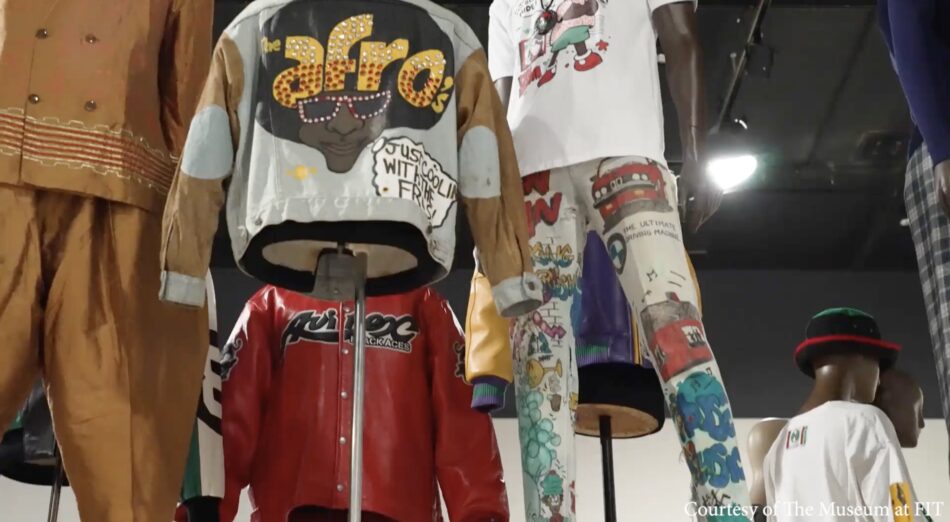New York is the birthplace of many trends, especially in fashion. One of these trends is celebrating its 50th anniversary this year: hip-hop.
Since Cindy and Clive Campbell’s (aka DJ Kool Herc) legendary back-to-school party in the recreation room of their apartment building in the Bronx on August 11, 1973, hip-hop has spread around the world like wildfire. It’s influenced culture and fashion like hardly any other musical genre. Probably the most visible manifestation of hip-hop in society is its influence on luxury labels and everyday street styles, famous fashionistas, and small town teenagers alike. Some significant movements are streetwear and athleisure, sneakers and logomania as well as the extra touch of bling.
The exhibition was born from an idea that FIT professor Elena Romero, who wrote a book about hip-hop fashion in 2012, pitched to the museum in 2018. She and Co-Curator Elizabeth Way began working on it in 2019.
“We usually have a slightly shorter timeline,” Elizabeth Way said. And they used their time wisely, producing a book to accompany the exhibition.
”This one is a very large kind of loan lender-heavy show, so we have pieces from over 50 different private and designer archives,” she said. “It was a large undertaking.”
The exhibition shows how the style evolved as hip-hop spread, influenced by regions and neighborhoods. While hip-hop in many areas is very male-dominated, to Romero and Way it was important to emphasize women’s style equally with men’s.
“We really focus on fashion and the evolution of hip-hop style,” Way said. “Both, the brands that were important to hip-hop, but also the personal style of so many in hip-hop.”
To her, the exhibition’s aim is to celebrate all these creators. And while she hopes that the important debates about appropriation and the wrongdoings will continue, she wants people to walk away from this exhibition knowing where these styles came from.
Hip-hop is the invention of the working-class youth, predominantly people of color, and has endured many of the same hardships that most cultural expressions of marginalized communities face from institutional racism. Hip-hop is inventive, customizing and remixing existing forms – in music and in style. Pushing boundaries in a way that has meant that even to this day it’s often perceived as “over the top” or “too much.” And still, inevitably maybe, mainstream culture began to adopt, adapt, and appropriate aspects of the influential musical genre.
Way says there has been an exceptional amount of interesting and heartfelt personal stories around the objects in their exhibition. One example she gave was that her co-curator, Romero, born the same year as hip-hop itself, 1973. Romero also grew up in Brooklyn with hip-hop and she remembers how, as a kid in the 1980s, it felt like a rite of passage to go to Delane Street and haggle for your sheepskin coat. Way said she loves those personal stories that are all about New York City.
“All about kids on the street,” she said. She explains how the popularity of tracksuits for instance is credited to hip-hop group run-D.M.C., but it was really the neighborhood kids who popularized the style.
While most might associate the fashion with tracksuits, sneakers and bling bling, with oversized shirts and baggy jeans – a look popularized as hip-hop made its way into the mainstream in the 1980s and 90s – hip-hop has a lot more to offer. The exhibition portrays the bandwidth, from 1970s shearling jackets to seemingly preppy brands such as Tommy Hilfiger and Timberland claimed by the movement in the early 2000s. Young, black-owned labels such as Telfar are included, a brand which has hugely grown in popularity in just the past three years. The curators wanted to bring to light Black and brown creators, whether they are designers, kids who were styling themselves, or stylists working with celebrities. Way called attention to these stories specifically to honor the culture’s origin.
After opening the exhibition with a party on Tuesday, February 9, it will run until April 23, 2023. Romero and Way will be speaking at the Queen’s public library and a symposium will be held at the Museum at FIT on February 24.


